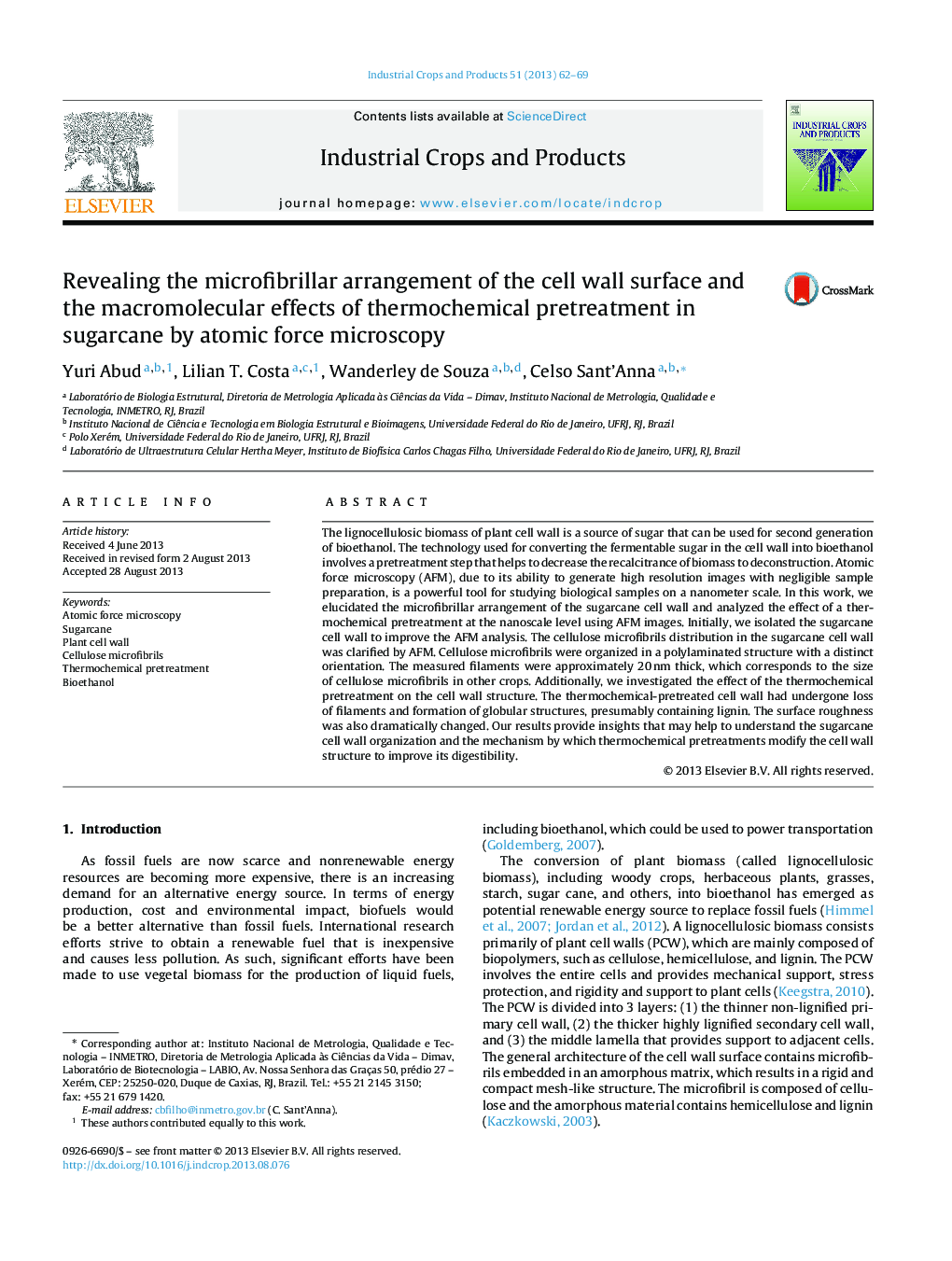| Article ID | Journal | Published Year | Pages | File Type |
|---|---|---|---|---|
| 6377185 | Industrial Crops and Products | 2013 | 8 Pages |
â¢AFM was used to investigate the cellulose microfibril organization in sugarcane cell wall surface.â¢Cell fractionation was applied to obtain a fraction of the isolated sugarcane cell wall.â¢Cell wall structure changes caused by thermochemical treatment was determined by AFM.â¢The surface roughness factor was used to determine the changes in cell wall after pretreatment.â¢The chemical nature of globular structures formed after pretreatment was suggested by TEM.
The lignocellulosic biomass of plant cell wall is a source of sugar that can be used for second generation of bioethanol. The technology used for converting the fermentable sugar in the cell wall into bioethanol involves a pretreatment step that helps to decrease the recalcitrance of biomass to deconstruction. Atomic force microscopy (AFM), due to its ability to generate high resolution images with negligible sample preparation, is a powerful tool for studying biological samples on a nanometer scale. In this work, we elucidated the microfibrillar arrangement of the sugarcane cell wall and analyzed the effect of a thermochemical pretreatment at the nanoscale level using AFM images. Initially, we isolated the sugarcane cell wall to improve the AFM analysis. The cellulose microfibrils distribution in the sugarcane cell wall was clarified by AFM. Cellulose microfibrils were organized in a polylaminated structure with a distinct orientation. The measured filaments were approximately 20Â nm thick, which corresponds to the size of cellulose microfibrils in other crops. Additionally, we investigated the effect of the thermochemical pretreatment on the cell wall structure. The thermochemical-pretreated cell wall had undergone loss of filaments and formation of globular structures, presumably containing lignin. The surface roughness was also dramatically changed. Our results provide insights that may help to understand the sugarcane cell wall organization and the mechanism by which thermochemical pretreatments modify the cell wall structure to improve its digestibility.
